Mercury
Orbital period of 88 days.
Rotational period ∼ 56 days (Long thought to be ∼ 88 days: In fact, it is 2/3 of the orbital period).

MercuryOrbital period of 88 days.
Rotational period ∼ 56 days (Long thought to be ∼ 88 days: In fact, it is 2/3 of the orbital period). |
 |
No atmosphere (except trace Hydrogen), since midday temp ∼ 700K, midnight temp ∼ 100K, and escape velocity ∼ 4 kms-1
No moons.
The surface of mercury Probably impact with large planetoid shock travelled round mercury, & focussed on "weird terrain" |
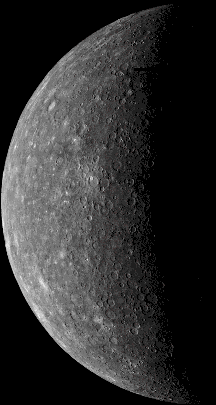 |
| A mosaic from Mariner:Photomosaic from 18 photos taken at 42 second intervals by Mariner 10 on March 29, 1974. North Pole at top. A large circular basin about 1300 km in diameter is emerging from the day-night terminator at left-centre. Note bright rayed craters.< No atmosphere (except trace Hydrogen), since midday temp ∼ 900 °C, midnight temp ∼ -200 °C, No moons. Magnetic field 10-2 gauss (1/100 of earth's) Why? |
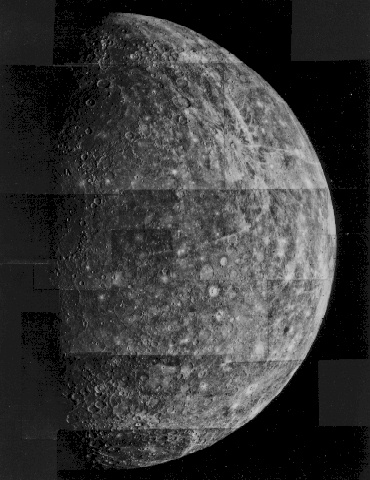 |
| Degas crater |
VenusAlmost featureless in optical. Usual picture is UV (upper) or infrared (lower) and only shows cloudtops. Venera, pioneer and radar showed surface for first time Orbital period 225 days. Radius ∼ 6052 km. |
 |
Radar maps show rough terrain as bright |
 |
| The north is mountainous, large plateaus (Ishtar terra, Aphrodite terra) |  |
| Sapas Mons, a volcano 400 km across and 1.5 kn high is on the western edge of Alto Regio. Note the lava flows extend for hundreds of km. | 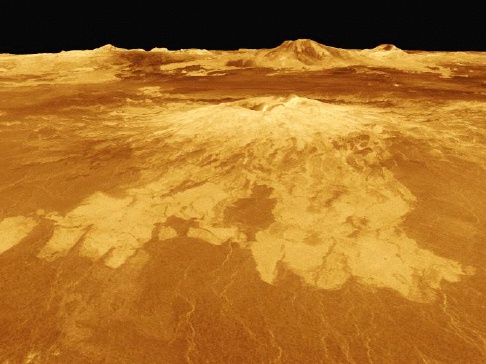 |
| Maat Mons is located in the background on the horizon, and shown below. (Vertical scales exaggerated 10 times.) | 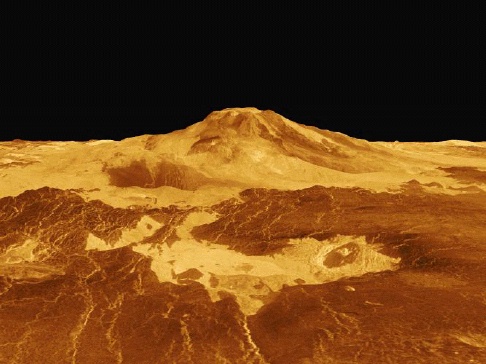 |
Southern hemisphere cratered (but only large ones) large canyons (rift valleys) |
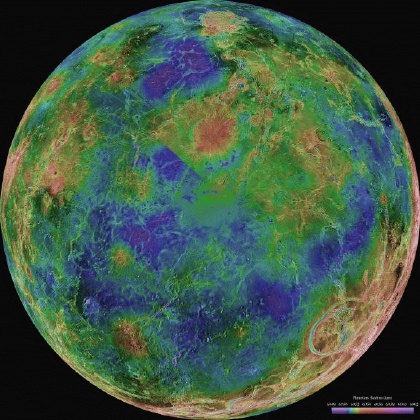 |
Upper clouds rotate in 4 days (∼360 km hr-1) Surface rocks basaltic, appear to be young |
 |
Why is Venus (Earth's twin) so utterly different?
On earth, liquid water formed early CO2 + H2O -> H2CO3 Combined with calcium to give limestone etc. On Venus, H2O remains in atmosphere so CO2 cannot react->super greenhouse effect
MarsOrbital Period 687 days. Temperature range 210 K->310 K |
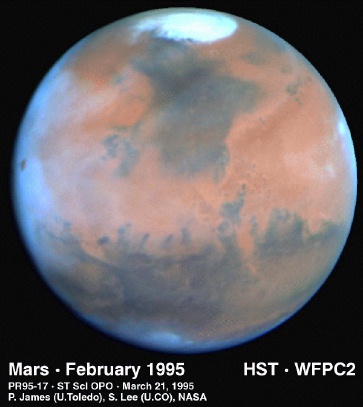 |
| Two small, close, irregularly shaped moons. Phobos has very large impact crater. |
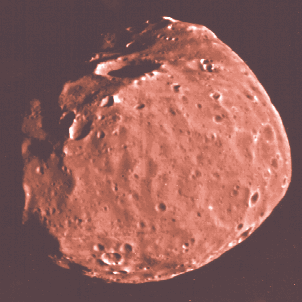 |
| Deimos Moons are probably captured asteroids. |
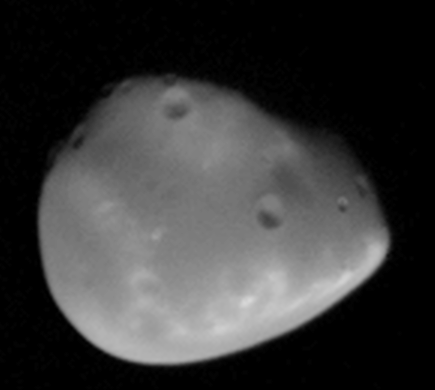 |
SURFACE colour from Fe2O3
Mainly sand
CRATERS:
Many impact craters, but more eroded than on moon
| VOLCANOES: Olympus mons: 25 km high, evidence of lava flows. Much larger than equivalent ones on earth (why?) |
 |
Candor Chasma |
 |
| Polar caps: CO2 Very thin, shape changes with season. |
 |
| Evaporation of CO2 seems to trigger dust storms | 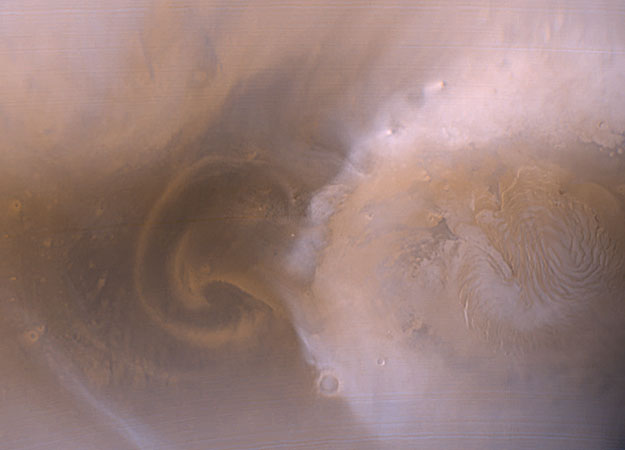 |
| Very similar to those on earth | 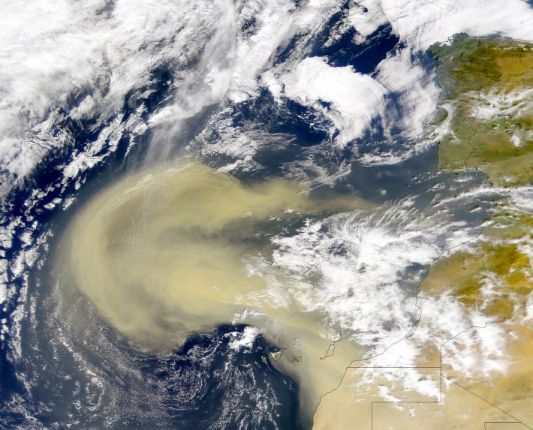
Dust Storm on Planet Earth Credit: SeaWiFS Project, GSFC, NASA |
Dust storms frequently cover most of the planet with haze | 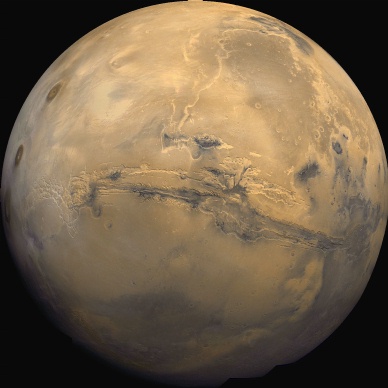 |
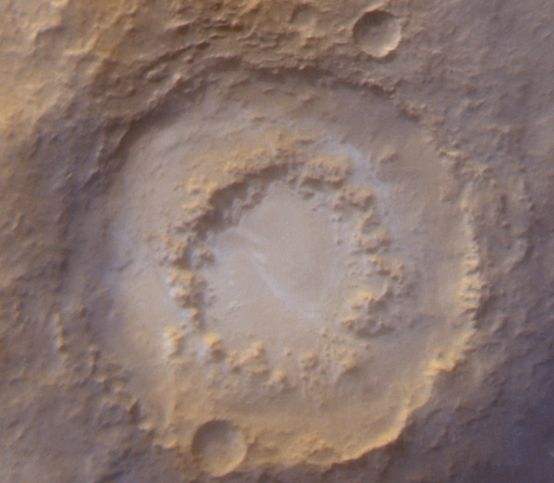
| Many craters, at various stages of newness |  |
| The interesting problem: Does Mars have water? Sometimes it looks just as though it once did | 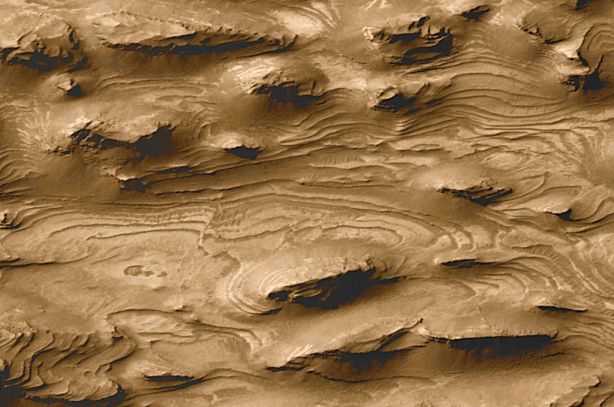 |
| This is the Newton crater | 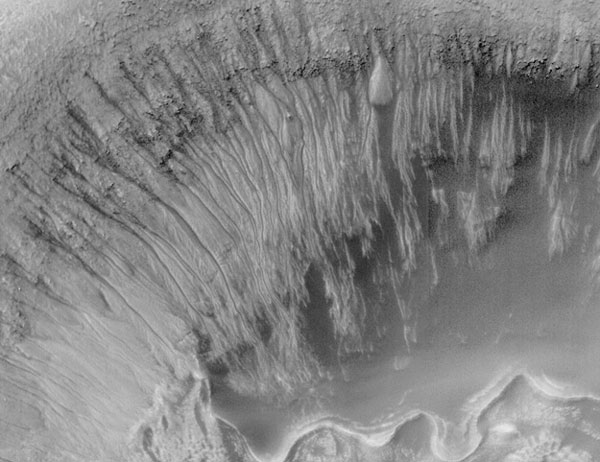 |
| and what really look like arroyos in New Mexico | 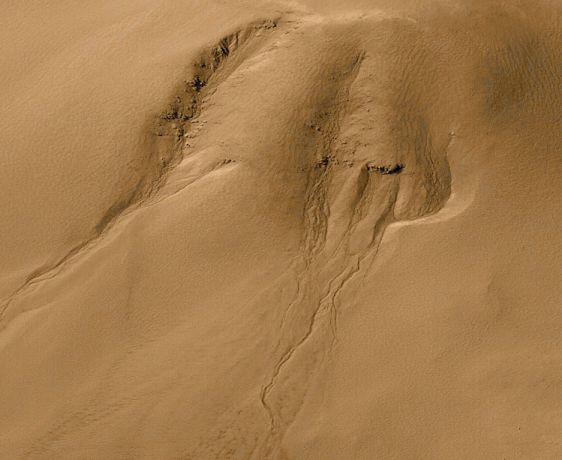 |
Lots more small scale evidence: e.g. Opportunity landed in region of hematite, which usually implies water. Chemistry and geology suggest surface more like transient lake beds (e.g. lake Chad on Earth).
But where is it? Probably much less than on Earth, probably broken up by UV, hydrogen boiled off, oxygen combined with minerals. Some may be left underground. But we don't know.
But there is a second interesting problem: how come the Mars rovers kept running much longer than anyone expected....
Summary: all the inner planets are small, rocky, Now the outer planets